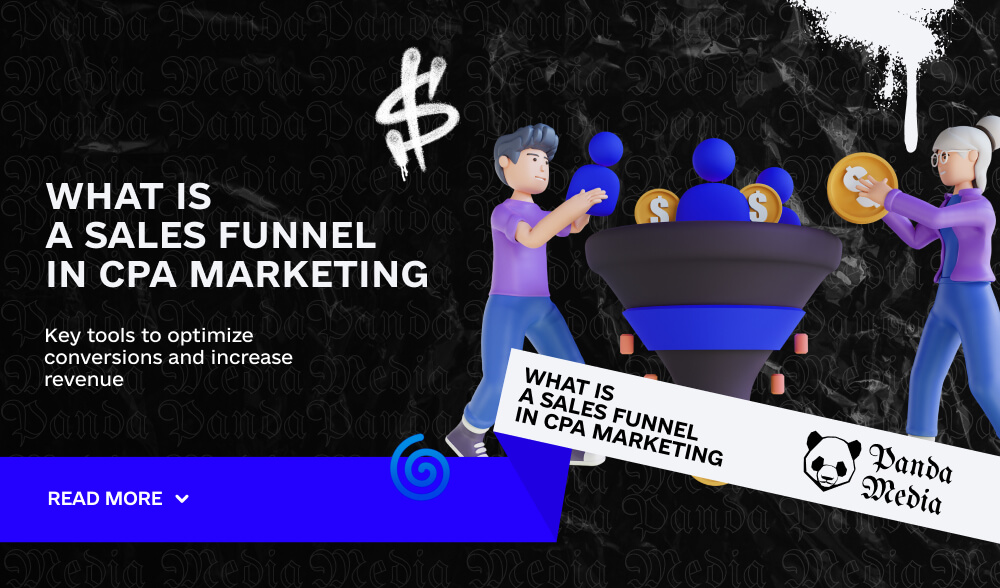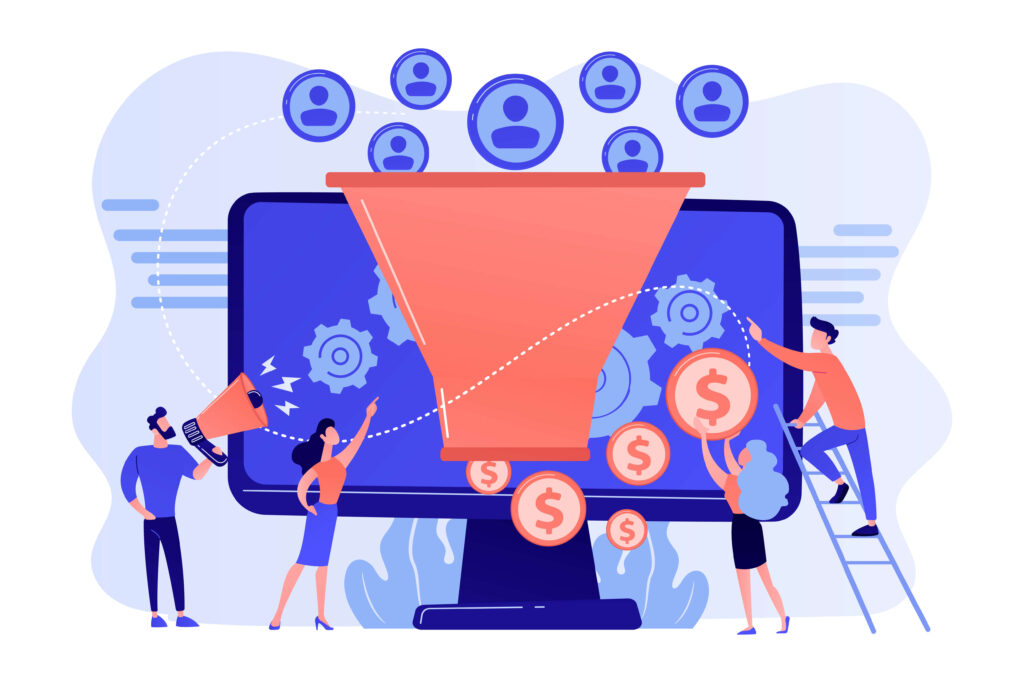Don't miss interesting news

The sales funnel is used even by those who don’t realize its significance. When an arbitrager guides a user from the moment of “arousing interest” to “taking a key action,” they are using a funnel.
An unoptimized or ineptly used funnel can lead to the loss of a large amount of traffic. In this article, we’ll take a closer look at what a sales funnel is, how it works, and what you need to create one.

A sales funnel is a customer’s route from the first acquaintance with a product to its purchase. This process consists of several key stages responsible for different levels of customer engagement. This tool, developed by William Townsend, covers four main stages, which are known as the AIDA system, an acronym for:
The user journey begins with the “attention” stage, but not everyone reaches the final “action” stage. This dynamics of reducing the number of customers at each step is what gave this model its name as a “funnel”.
In CPA marketing, this model is expanded by introducing additional elements and detailing each stage into several stages. In particular, some funnels go beyond the purchase of a product and lead the customer to a repeat purchase or a long-term subscription.
Rebuilding the sales funnel allows you to study the moments of losses in detail, and identify the stages at which users stop continuing their activities and the reasons for their decision.
The main tasks that the funnel solves:
The better the funnel is set up, the lower the bounce rate and the higher the percentage of targeted actions.

In arbitrage, the stages of the funnel are used similarly to classic AIDA marketing, but the essence of each step is different:
The arbitrager’s task is to encourage the user to take the target action here and now. This action should be impulsive. Therefore, arbitrage funnels usually do not add additional actions, and sometimes reduce 4 classic stages to 2-3.
Parameters by which arbitrageurs evaluate the effectiveness of a sales funnel:
The specificity of the arbitrage funnel is its acceleration. Traditional funnels, in addition to sales, solve the problem of eliminating competition and product uniqueness. This is not the case in arbitrage. The main goal is to encourage the user to perform a targeted action. Therefore, traditional strategies in arbitrage are usually ineffective or bring little profit.
The arbitrage funnel is effective on all verticals. If you need to get a target action from a user, you need to direct them to this action.

An important step in developing a marketing funnel is to analyze your target audience. It’s important to understand who you’re selling to and what path a customer has to go through before they’re ready to buy. To do this, you need to:
Analyze your target audience
The main task of your website is to collect as much data as possible about your target audience: interest in the product, gender, age, number of clicks, and time spent on the site. The more data you collect, the easier it will be to select. If the funnel is adapted to the audience profile, you have a better chance of converting leads into real customers.
Attract users’ attention
To attract the audience to the funnel, you need high-quality content. It’s important to encourage interest and inspire trust in your product or service.
Create a landing page
Users get to the landing page after clicking on an ad.
The landing page is the link between “attention” and “action”. Design it simply, with a minimum of distracting elements, except for large and bright call-to-action buttons that will tell the potential customer what to do next.
The use of sales funnels is a method of increasing sales that is actively used not only by marketers. Funnel analysis will help you understand what aspects need to be improved to increase sales.
Evaluate the effectiveness of each stage of the funnel to identify weaknesses. Focus on optimizing these points to ensure that leads move through the funnel easily and take targeted actions.